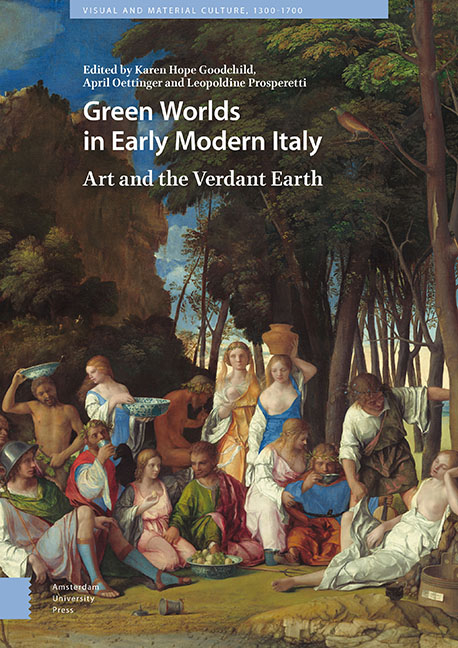Book contents
4 - “The Sala delle Asse as Locus amoenus: Revisiting Leonardo da Vinci's Arboreal Imagery in Milan's Castello Sforzesco”
Published online by Cambridge University Press: 21 November 2020
Summary
Abstract
New findings on Leonardo da Vinci's painted canopy of trees in the Sala delle Asse raise questions about the artist's engagement with Early Modern poetic discourses on the verdant world. This essay aims to investigate Leonardo's understanding of the pastoral ideal and visualizations of the locus amoenus in the context of the Sforza court. It further explores the relationship between the Sala and the Castello Sforzesco's surrounding formal gardens and more untamed hunting park, or barcho. As these external grounds played a critical role in the conception of the arboreal imagery, this paper argues that the Sala delle Asse existed as an intermediary space between the cultivated and wild and by extension the rational and fantastical.
Keywords: Leonardo da Vinci, Sala delle Asse, Sforza, Milan, Castello Sforzesco, Locus amoenus
The premise of this essay is that the production and appearance of the Sala delle Asse, or the ‘Room of the Wooden Planks’, with its bower of intertwined mulberry trees, evolved as part of the sophisticated and multidimensional perception of nature that developed within the context of the Sforza court of Milan at the end of the Quattrocento. (Plates 11 and 12) Typically, scholars have interpreted the room in terms of its intended glorification of the patron Duke Ludovico Sforza (1452–1508). These analyses have emphasized the presence of the prominent coat of arms and four plaques with laudatory inscriptions adorning the room's central vault. The room's conspicuous mulberry trees also supplied a cunning pun on Ludovico Sforza's familiar appellation ‘Il Moro’ (the Moor), which likely referred both to his dark complexion and ‘gelsomoro’ (mulberry). In other readings of the Sala, scholars have seen the room as related to its designer Leonardo da Vinci's prolific scientific investigations of the natural world, known mainly through his celebrated botanical studies. While these interpretations provide some explanation for the room, the function and significance of the imagery is multivalent. The Sala should also be considered in relation to the visual poetics of greenery that flourished in Northern Italy and in concert with Leonardo's own literary and theatrical interests, which came together to inform his new approach to naturalism galvanized in part by his dynamic ideas about pictorial inventio.
- Type
- Chapter
- Information
- Green Worlds in Early Modern ItalyArt and the Verdant Earth, pp. 89 - 108Publisher: Amsterdam University PressPrint publication year: 2019

